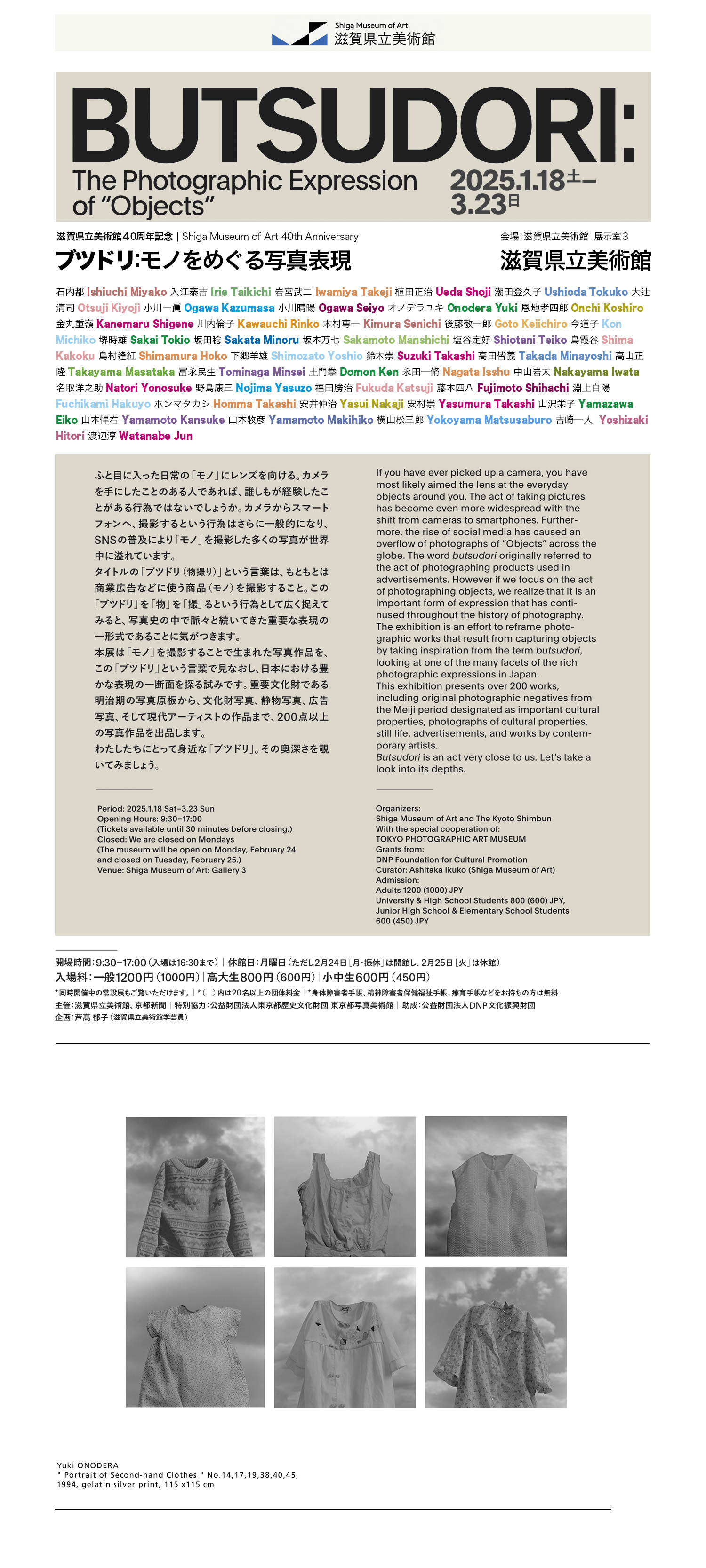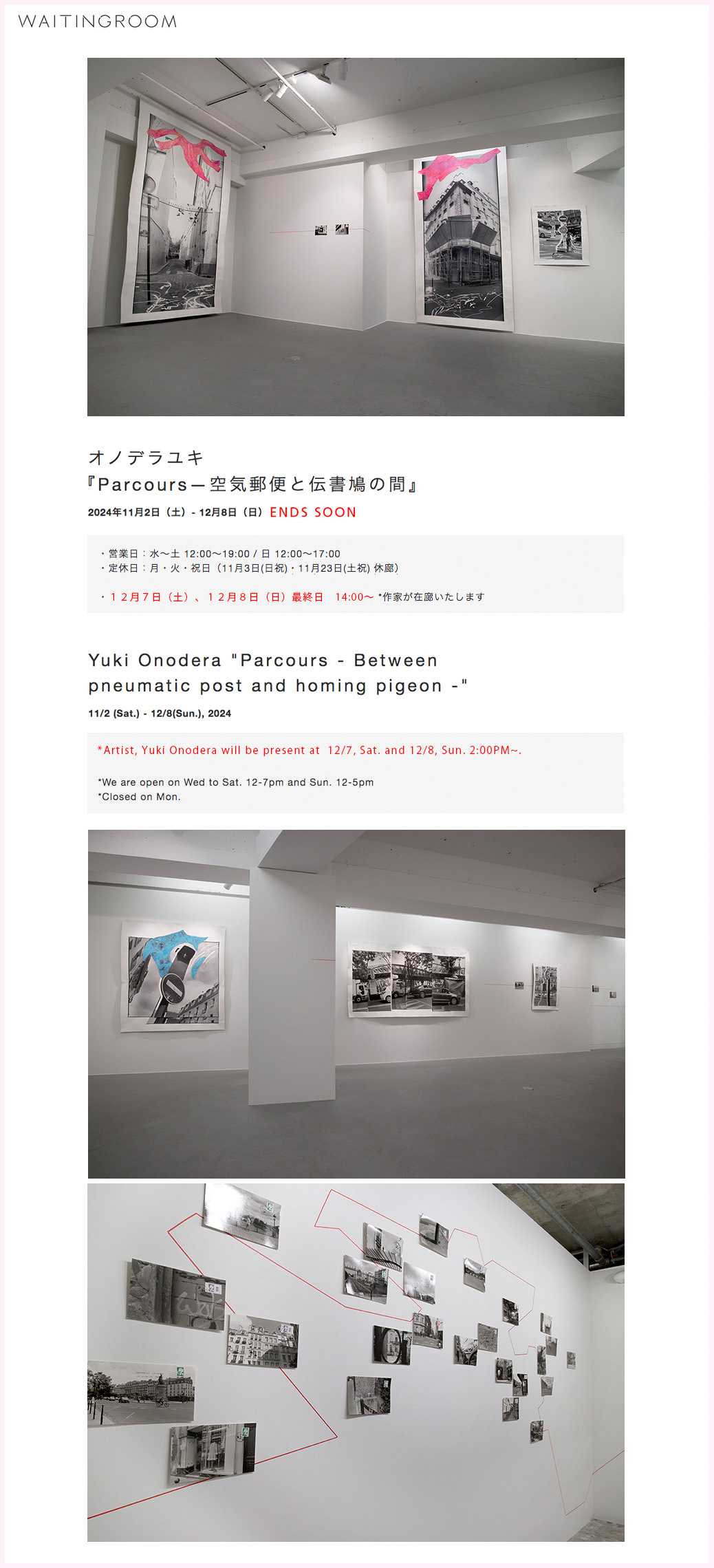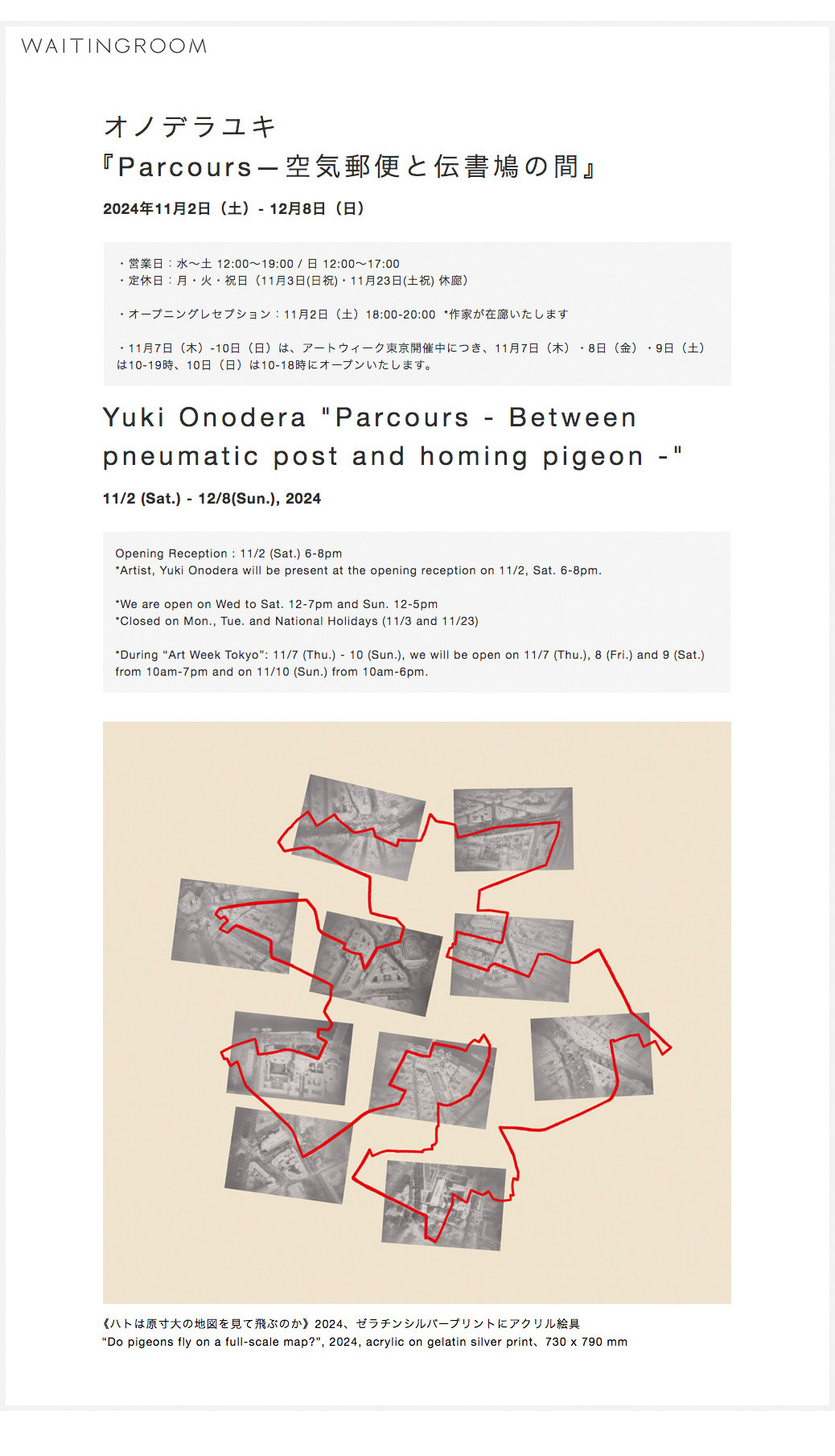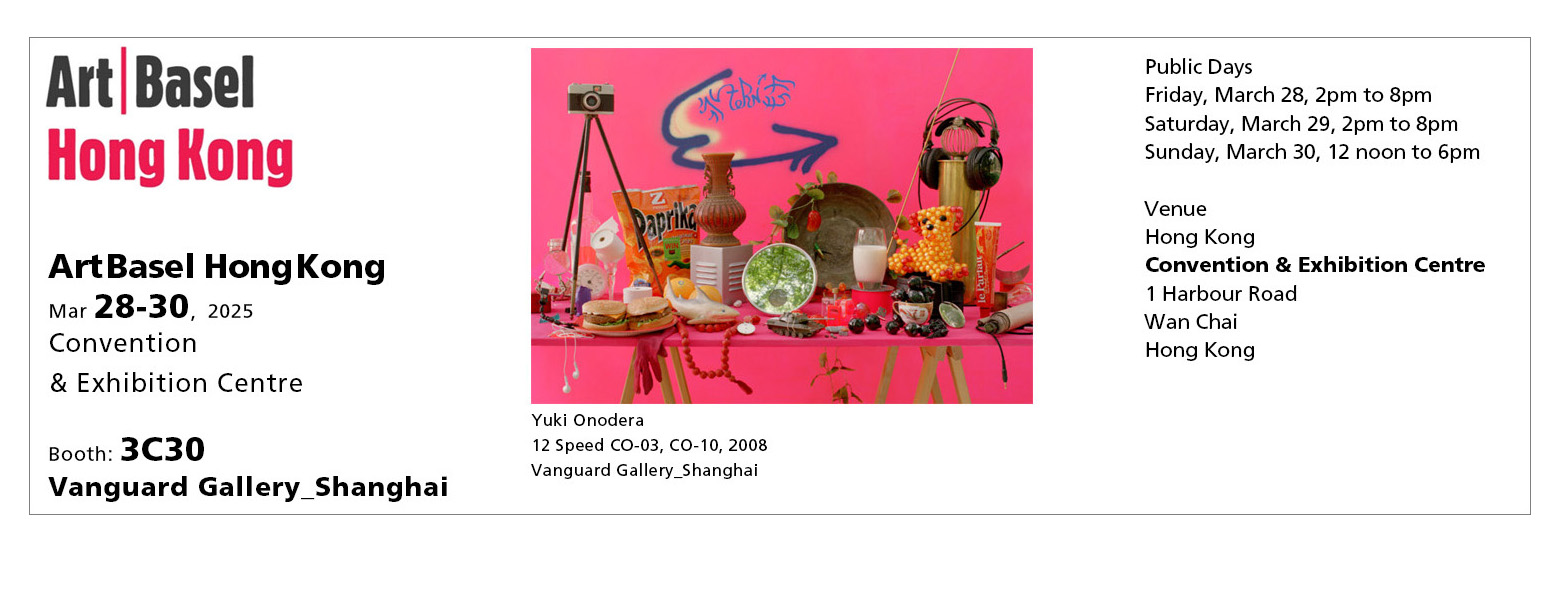
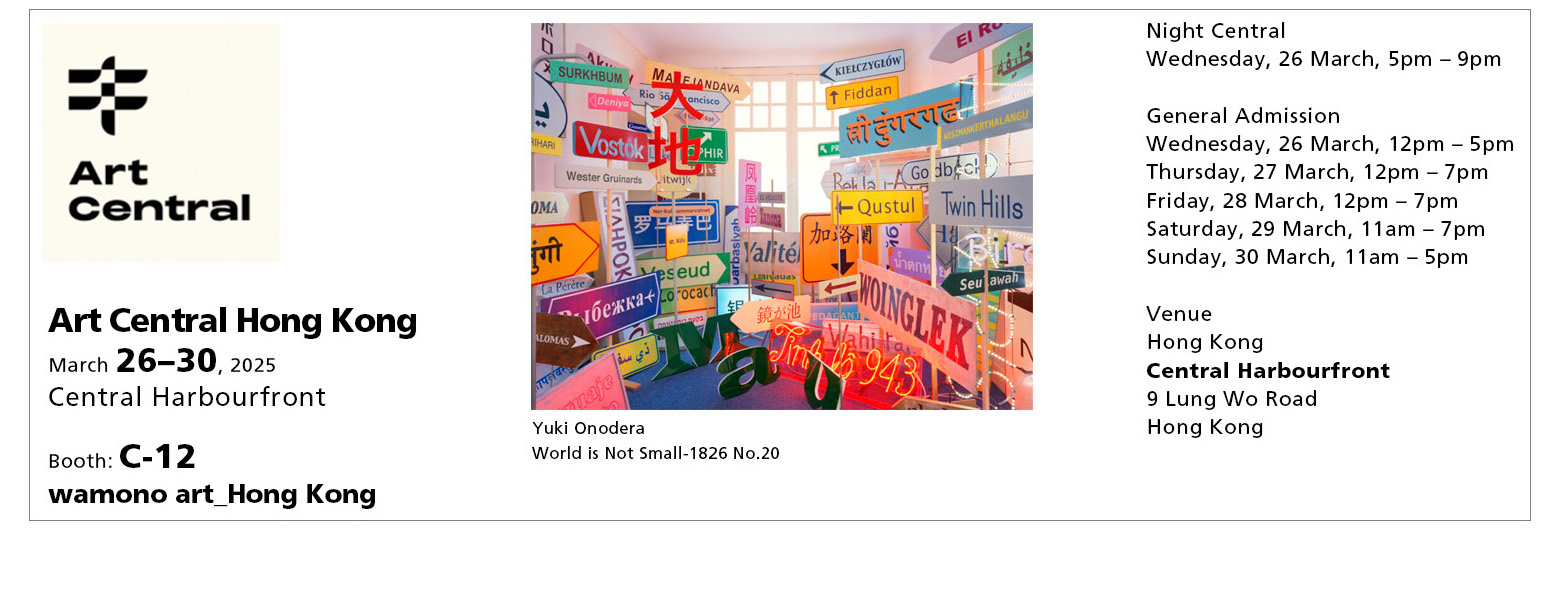
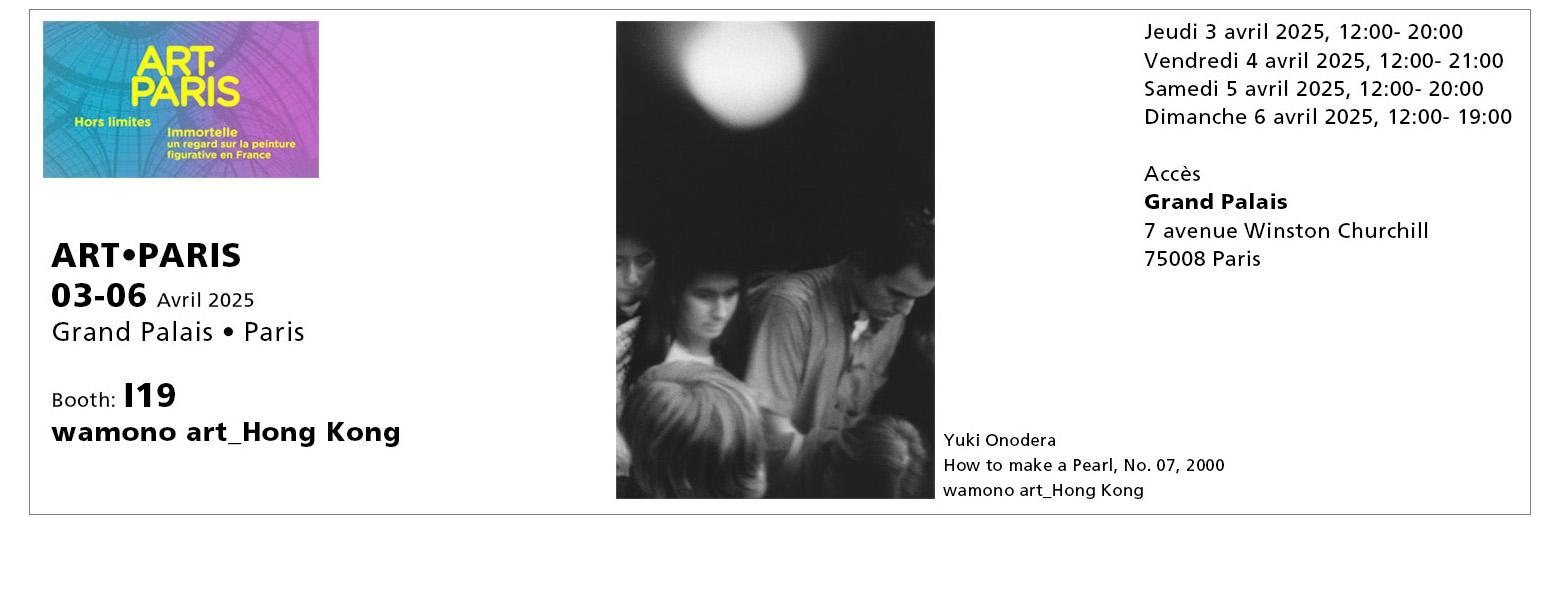
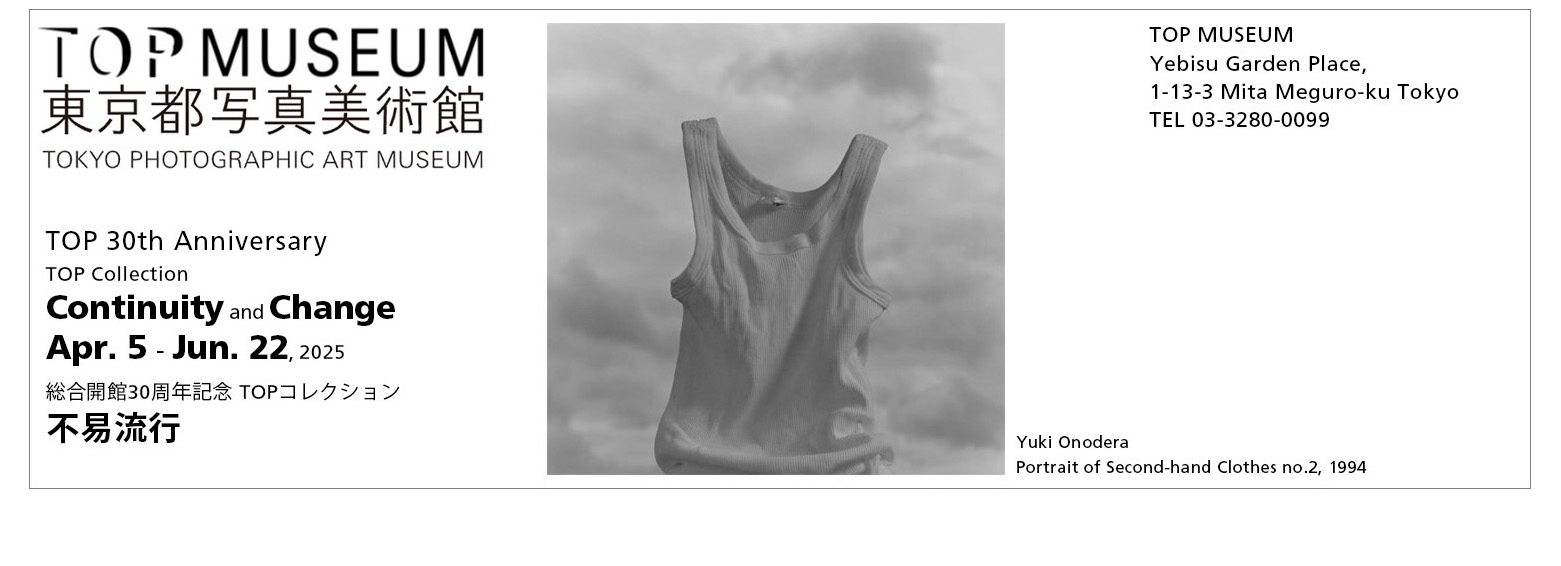
———————————
Art Basel Hong Kong
Mar 28-30, 2025
Convention & Exhibition Centre • Hong Kong
Booth: 3C30
Vanguard Gallery_Shanghai
Yuki Onodera
12 Speed CO-03, CO-10, 2008
Vanguard Gallery
Shanghai
Opening Hours
VIP Days (by invitation only):
First Choice | Wednesday, March 26, 12 noon to 8pm
First Choice and Preview | Wednesday, March 26, 3pm to 8pm
First Choice and Preview | Thursday, March 27, 12 noon to 4pm
First Choice and Preview | Friday, March 28, 12 noon to 2pm
First Choice and Preview | Saturday, March 29, 12 noon to 2pm
First Choice and Preview | Sunday, March 30, 11am to 12 noon
Vernissage
Thursday, March 27, 4pm to 8pm
Public Days
Friday, March 28, 2pm to 8pm
Saturday, March 29, 2pm to 8pm
Sunday, March 30, 12 noon to 6pm
The last admission time is thirty minutes before closing.
Venue
Hong Kong
Convention & Exhibition Centre
1 Harbour Road
Wan Chai
Hong Kong, China
———————————
Art Central Hong Kong
March 26–30, 2025
Central Harbourfront
Booth: C-12
wamono art_Hong Kong
Yuki Onodera
World is Not Small-1826 No.20, No.12.
VIP Preview
Tuesday, 25 March | 2 pm – 8 pm
By Invitation Only
Night Central
Wednesday, 26 March | 5 pm – 9 pm
General Admission
Wednesday, 26 March | 12 pm – 5 pm
Thursday, 27 March | 12 pm – 7 pm
Friday, 28 March | 12 pm – 7 pm
Saturday, 29 March | 11 am – 7 pm
Sunday, 30 March | 11 am – 5 pm
Venue
Hong Kong
Central Harbourfront
9 Lung Wo Road
Hong Kong
——————————
ART•PARIS
03-06 Avril 2025
Grand Palais • Paris
Booth: I19
wamono art_Hong Kong
Yuki Onodera
How to make a Pearl, No. 07, 2000
wamono art_Hong Kong
Horaires
Jeudi 3 avril 2025 : 12:00 – 20:00
Vendredi 4 avril 2025 : 12:00 – 21:00
Samedi 5 avril 2025 : 12:00 – 20:00
Dimanche 6 avril 2025 : 12:00 – 19:00
Accès
Grand Palais
7 avenue Winston Churchill
75008 Paris
———————————
TOP MUSEUM • TOKYO
TOKYO PHOTOGRAPHIC ART MUSEUM
TOP 30th Anniversary
TOP Collection: Continuity and Change
Apr. 5—Jun. 22, 2025
総合開館30周年記念 TOPコレクション 不易流行
2025.4.5(土)—6.22(日)
Yuki Onodera
Portrait of Second-hand Clothes no.29, no.2, no.7, 1994
TOP MUSEUM
Yebisu Garden Place, 1-13-3 Mita Meguro-ku Tokyo, Japan
TEL 03-3280-0099
———————————







